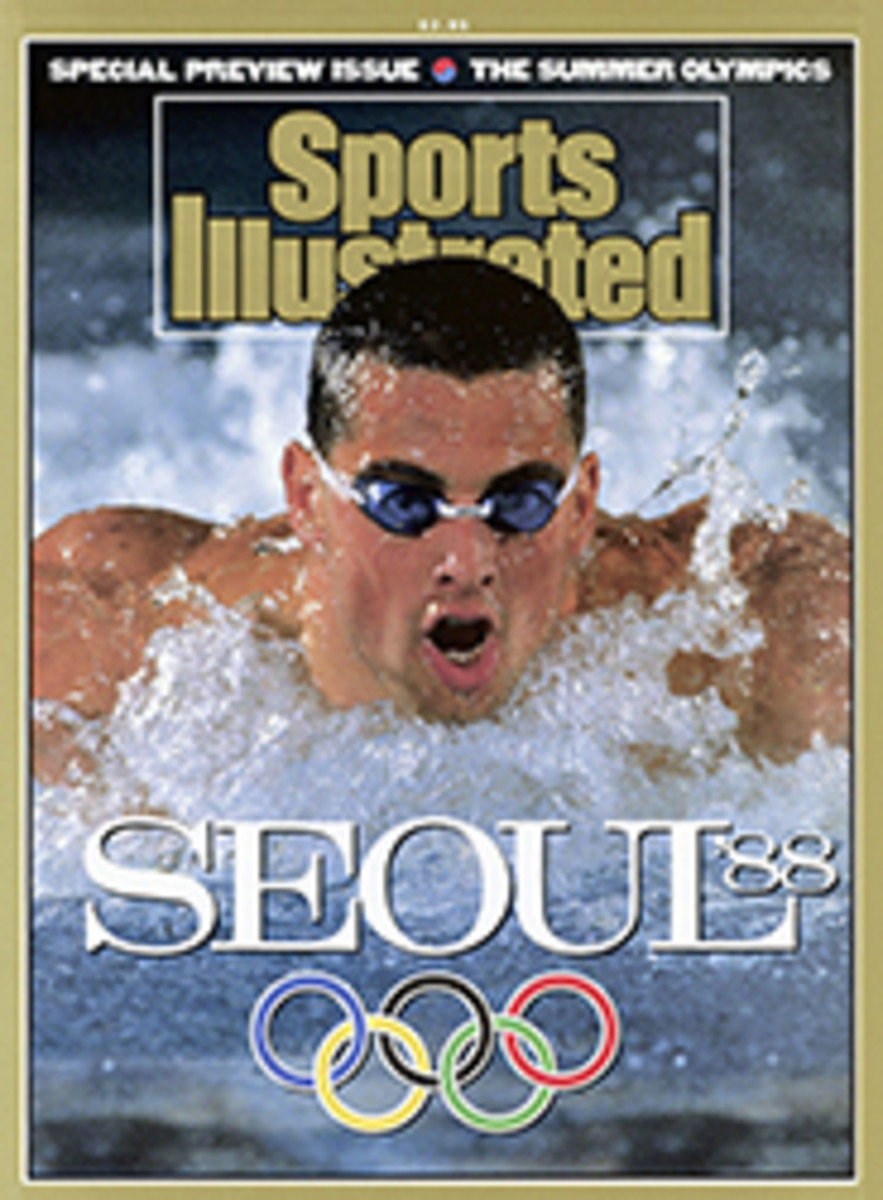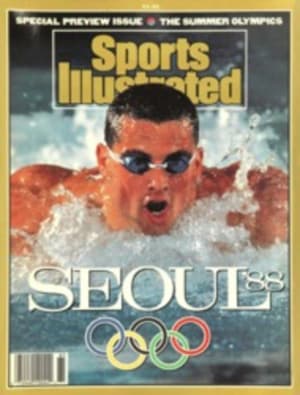
This Guy Has a License to Kill Steve Timmons, one of the mainstays of the favored U.S. team, has gone from slam-dunking to slam-bang spiking
STEVE TIMMONS LIKES PEOPLE TO call him a vicious killer. And when
Timmons says something, people listen. He's a stand-up 6 ft. 5 in.
and weighs maybe 210. When he sits down for lunch with some teammates
from the U.S. Olympic volleyball squad, he fills the table. He fills
the room. On court, standing in the back row, he fills the arena.
Timmons has presence.
Somebody remarks that the 29-year-old Timmons started killing when
he was only 14. ''Let me correct that,'' says the team's No. 1 hit
man. ''At 16, I was killing seriously. Before that, I killed just for
fun.''
For the uninitiated, killing is volleyball talk for ''successful
spiking.'' ''I've probably got more international kills than Agent
007,'' Timmons boasts.
Timmons was at his Bondian best during the 1984 Olympic volleyball
competition in Long Beach, Calif. He always seemed to be hovering
about two feet above the net, hammering the ball through opponents'
outstretched hands, slamming it off their shoulders, pounding it into
their astonished faces. Timmons was tops in the tournament with 106
kills, as the U.S. team beat Brazil in the final for its first-ever
gold medal.
On this year's Olympic squad, which is favored to repeat as
Olympic champion, Timmons and teammates Craig Buck and Karch Kiraly
form a kind of killer elite. Buck, a 6 ft. 8 in., 205-pound middle
blocker, is one of the sport's most devastating quick hitters. The
ubiquitous Kiraly, an outside hitter like Timmons who is regarded by
many as the most complete player in the world, leaps over blockers
taller than his 6 ft. 3 in. frame. But for the U.S. to repeat as
champ, it must again rely on Timmons's killer instincts. ''He has
flair and fire and incredible poise,'' says Gennadi Parchin, coach of
the second-ranked Soviets. ''He is the American team.''
While he was growing up in Newport Beach, Calif., all Timmons
wanted to do was make the NBA. His heroes were basketball players
like Wilt Chamberlain, Dr. J and Jerry West. ''I never even knew the
names of any volleyball players until I took the game up in school,''
he says.
Timmons was the starting center on the Orange Coast College
basketball team that won the 1979 California J.C. title. He
transferred to USC on a volleyball scholarship the next year and made
All-America in both 1980 and '81. Timmons also made the national team
in '81, although some coaches thought he might have chosen the wrong
sport. ''One suggested I try basketball,'' he recalls.
( Erratic and inexperienced, Timmons was left behind in 1982
when the U.S. team went to Argentina for the world championships. The
next year he missed the cut for the pre-tournament in Long Beach and
was relegated to the Pan American Games squad, second-stringers who
got creamed in Caracas.
In November 1983, with an important series against the powerful
Cuban national team in Havana only four months away, Timmons began
lifting weights with a vengeance. ''I vowed there wouldn't be any
Cuban stronger than me,'' he says.
Not since Batista ruled Cuba had Havana seen such a merciless
strongman. Timmons amassed 120 kills and 28 stuff blocks in the
six-match series. He also clinched a spot on the U.S. Olympic team.
''In that dark, dank locker room ((in the Ciudad Deportiva arena in
Havana)), I suddenly realized I'd be going to the Olympics,'' he
says. ''I just sat there and wept.''
If this incident seems to belie Timmons's murderous image, it
does. ''Steve walks around in this big, tough guy's body,'' says
Jeanie Buss, his girlfriend. ''Yet he's got a little kid's heart.''
Jeanie's father, Jerry, owns the Los Angeles Lakers. Earlier this
year, Jeanie videotaped Timmons playing 6 ft. 8 in. forward Kurt
Rambis, then of the Lakers, one-on-one. ''Rambis sank 10 20-footers
in a row and demolished me,'' says Timmons. ''I was kind of mad.''
Rather than brood, Timmons spent hours studying the tapes and
practicing moves to thwart Rambis. A week later, Timmons won the
rematch.
Of course, that's not exactly how Rambis remembers the event.
''Steve is a highly intelligent athlete, and that's why he chose to
play volleyball instead of basketball,'' Rambis says with a smile.
''He approached that game as if it were the seventh game of an NBA
final. But, despite what he may have told you, he cannot dunk like
Dominique Wilkins.''
The same sort of gritty resolve fueled Timmons's comeback from a
career- threatening injury after the 1984 Games. He had torn the
patellar tendon in his right knee during a tournament in South Korea.
Physicians told him he would be unable to compete for a year or more,
but Timmons worked hard and rehabilitated himself into playing shape
within seven months. ''At the same time I realized I might never be
the player I once was,'' he says. ''I had to do something with my
life.''
So he designed a fluorescent-yellow volleyball that became a hit
with the beach set, and he started a company named Redsand in San
Diego to market it. - The company has done well, and he now sells his
own line of hip beachwear, too.
If Timmons wants to continue his volleyball career after the
Olympics, he may have to jump to the Italian pro leagues, in which
top salaries approach $150,000. ''Volleyball players don't get a
whole lot of respect in the States,'' Timmons says. ''Most people
still think volleyball is 16 people on a beach who quit when the
hamburgers are ready.''

